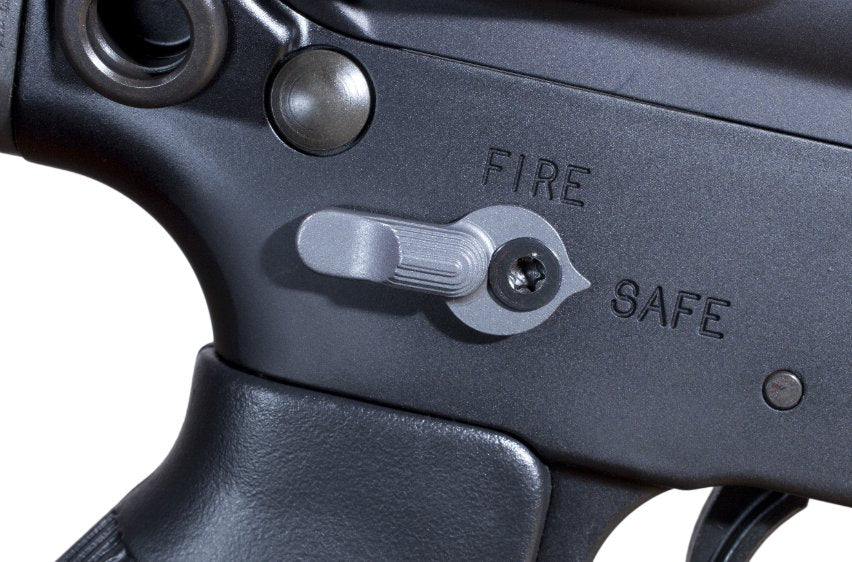- Always Point the Muzzle in a Safe Direction – NSSF states that this is the most basic rule of all. They tell us: “If everyone handled a firearm so carefully that the muzzle never pointed at something they didn’t intend to shoot, there would be virtually no firearms accidents. It’s as simple as that, and it’s up to you.” Pay particular attention to this rule when loading and unloading a firearm. When we say safe direction, we mean in a position that can’t strike a person or ricochet off something or be able to shoot through a wall or ceiling. Even if you’re dry firing, you want to point it at a safe target. Stay in control while you’re holding the firearm so you know exactly where the bullet will go.
- Keep Firearms Unloaded When not in Use – The only time a firearm should be loaded is when you are target practicing or in the field. When you are finished with the firearm, unload it immediately, not after you’ve packed up your vehicle and driven back home. As you’re handing a firearm to someone else, open the action and visually check the chamber, receiver, and magazine to ensure there is no ammunition. It’s important to never assume that a gun is unloaded; you always need to check this for yourself. And firearms and ammunition should be stored separate from each other in a safe place. (For quality gun cases, click here.) It is the gun owner’s responsibility to prevent unauthorized people or children from accessing a firearm.
- Don’t Rely on the Firearm’s Safety – The safety on a firearm is an additional insurance but should not be relied on as a sure bet. NSSF states: “treat every gun as though it can fire at any time.” People often think the safety is on only to find out too late that it was off. You also never want to hold a gun with a finger on the trigger until you are fully ready to shoot. Even if the safety is on, sometimes a jolt to a gun, such as getting dropped, can cause it to fire. The only time a gun won’t fire for certain is when the action is open and contains no ammunition.
- Prepare Your Target and Know What’s Behind It – Assess the area before starting target practice. Make sure you are confident in your target and that you know what’s beyond the area. Once that gun is fired, there is nothing you can do to take that bullet back.

Firearm Safety
No matter how comfortable you are with a firearm, they always require a special set of safety guidelines. The National Shooting Sports Foundation (NSSF) says if you own it, respect it, and secure it. Their website goes into depth on the ten rules of firearm safety, but this blog will discuss the four major ones. Avoid irreparable mistakes by following these four safety rules: